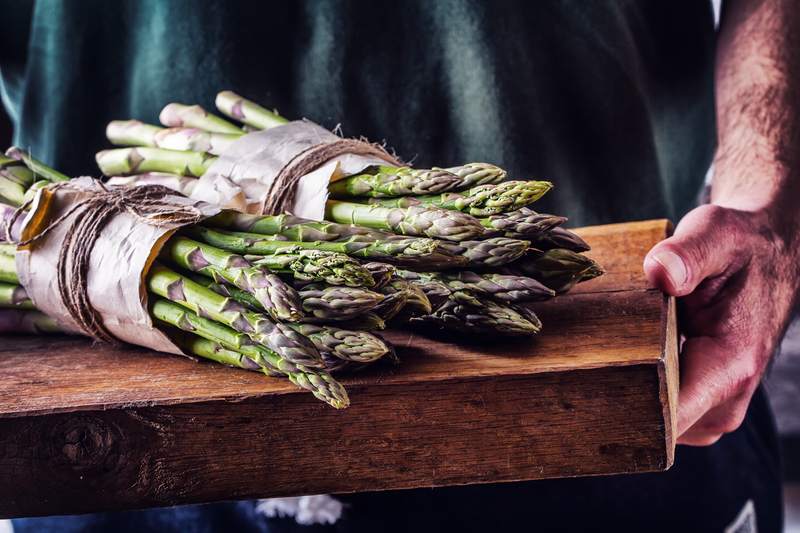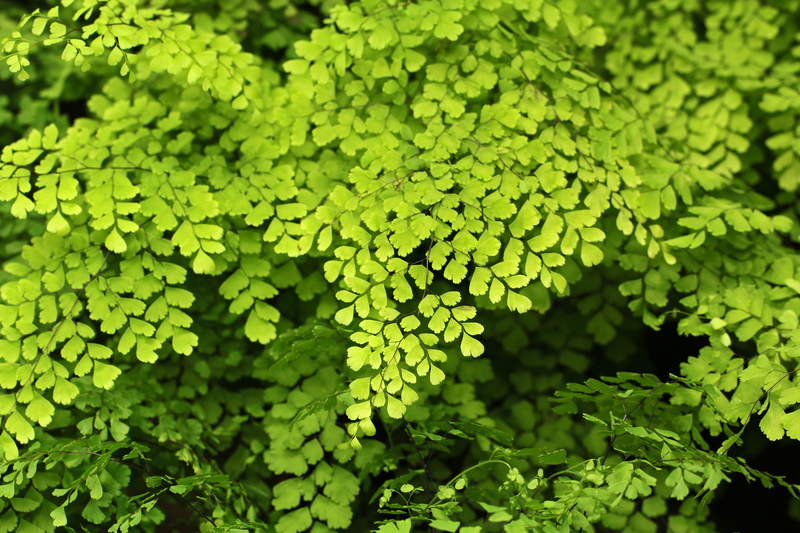From Imagination to Reality: Building Gardens for Kids
Posted on 31/08/2025
From Imagination to Reality: Building Gardens for Kids
Children possess a world of creativity within their minds, seeing magic in the mundane and adventure in the everyday. One of the most enriching ways to nurture this creativity is by building gardens for kids. Not only do kids gardens offer an avenue for learning, fun, and physical activity, but they also foster a deeper connection with nature. Whether you have a large yard or a modest balcony, creating a children's garden transforms imagination into a living, growing reality.

Why Designing Gardens for Kids Matters
Modern life often pulls children indoors, away from fresh air and the tactile sensations of the outdoors. Establishing a garden for children offers lifelong benefits, such as:
- Promoting physical fitness through digging, watering, and planting
- Encouraging healthy eating by growing fruits, herbs, and vegetables
- Stimulating sensory development via colorful flowers, aromatic herbs, and diverse textures
- Building responsibility as children care for living plants
- Fostering curiosity and science skills with lessons in botany and ecology
- Developing patience as kids watch plants sprout and grow over time
As you embark on creating play gardens or imaginative gardens for children, remember that the focus is on experiences -- not perfection. Let's explore how to turn your child's garden ideas into reality.
Planning Your Children's Garden: Imagination First
1. Involving Kids in the Planning Process
The magic of a children's garden stems from giving your child a sense of ownership. Before buying seeds or picking a spot, sit down together and talk. Ask questions such as:
- What are your favorite colors?
- Which animals or insects do you want to attract?
- Would you like space to dig or build?
- Do you want to grow food you can eat?
Sketch out ideas, browse books or online pictures, and let your child's imagination guide the garden's design.
2. Choosing a Kid-Friendly Location
A successful garden for kids starts with the right spot. Look for an area that is:
- Visible: So children can watch their garden as it changes
- Accessible: Easy for little legs and hands to reach
- Safe: Free from sharp objects, toxic plants, or hazards
- Sunny: Most vegetables and flowers enjoy six hours of light daily
- Close to a water source: Making it easy for kids to help with watering
Even a few pots on a patio or a window box can become a miniature children's garden space.
3. Selecting Plants for a Kids Garden
Plant selection is where imagination meets reality. For gardens for kids, prioritize:
- Colorful and fast-growing plants (like sunflowers, zinnias, snapdragons)
- Edible choices (cherry tomatoes, lettuce, strawberries, basil, mint)
- Sensory plants (lamb's ear for soft touch, lavender for scent, ornamental grasses for sound)
- Tough groundcovers (creeping thyme) for safe walking
- Unusual shapes (curly parsley, round pumpkins, tall beans with trellises)
Creative Themes for Imaginative Kids Gardens
Building a children's garden can be more than just rows of vegetables or pretty flowers. Tap into the power of imagination with thematic ideas:
1. Fairy Tale and Storybook Gardens
- Enchanted paths with stepping stones and tiny "fairy" houses
- Hidden treasures (colorful stones, garden gnomes, or painted rocks)
- Mossy corners and miniature plants for a "magical" forest feel
2. Sensory and Discovery Gardens
- Textures: Lamb's ear, sage, and ornamental grasses for softness or rustling sounds
- Scents: Mint, basil, rosemary, and scented geraniums
- Sights: Bright annuals, patterned leaves, and colorful vegetables
- Tastes: Strawberries, snap peas, and cherry tomatoes they can nibble
3. Wildlife and Pollinator Gardens
- Butterfly-friendly flowers like milkweed and coneflowers
- Bee hotels and bird baths for teaching about insects and birds
- Native plants to attract local wildlife
4. Edible Gardens for Kids
- Pizza garden: Tomato, peppers, basil, oregano, and onions in a round bed
- Rainbow garden: Plant vegetables of every color
- Snackable beds: Snap peas, carrots, and strawberries for quick picking and eating
Building and Planting Your Kids Garden
Preparing the Soil
Great gardens start with great soil. Involve children in adding compost or organic matter, teaching them about worms and bugs that help plants thrive.
- Let kids use child-sized tools and dig small holes themselves
- Use raised beds, planters, or fabric grow bags if ground soil is poor
Planting: Making It a Hands-on Adventure
Let kids plant seeds, water, and label the plants with their own signs or art. Children learn the most when they are directly engaged in every step. Encourage them to get dirty--gardening is all about hands-on exploration!
Creating Fun Structures
- Teepee trellises with climbing beans for secret hideaways
- Willow tunnels or arches for magical passageways
- Stepping stones crafted or decorated by your child
- Colorful garden stakes and wind spinners for extra flair
Kid-Safe Gardening: Safety First
All gardens for children should be designed with safety in mind. Before you begin, keep these essential tips in mind:
- Choose non-toxic plants: Avoid foxglove, oleander, or other poisonous varieties
- Steer clear of pesticides and herbicides: Use natural pest deterrents
- Ensure tools are age-appropriate: Blunt edges, soft handles
- Provide shaded spots for breaks and drinking water on hot days
- Have a designated storage for tools and supplies out of reach
Top Activities for a Children's Garden
- Scavenger hunts: List of textures, colors, or bugs to find around the garden
- Garden art projects: Paint pots, rocks, or plant markers
- Nature journaling: Track growth, draw plants, or write garden stories
- Cooking classes: Harvest and make snacks together
- Wildlife counting: How many bees, butterflies, or birds can you spot?
The Power of Play: Imaginative Spaces in Kids Gardens
For children, a garden is more than a collection of plants--it's a stage for adventure. Consider incorporating:
- "Mud kitchens" with old pots and pans for messy, creative play
- Secret corners shielded by tall sunflowers or vines
- Outdoor reading nooks with waterproof cushions or hammocks
- Chalkboard walls or painted surfaces for drawing and games
Most importantly, let your child's imagination direct the play. The best children's garden is a flexible playground that evolves as your child grows.
Seasonal Care: Gardening Year-Round With Kids
A garden for kids spans more than just spring and summer blooms. Every season offers wonders and lessons:
- Spring: Plant seeds, watch bulbs emerge, learn about pollinators
- Summer: Watering routines, bug hunts, making sun prints or herbal ice cubes
- Autumn: Harvest time, leaf crafts, planting bulbs for next year
- Winter: Feed birds, decorate with natural materials, start indoor seedlings
*Nurturing a kids garden all year deepens their sense of responsibility and wonder.*
Encouraging Lifelong Gardening Skills
Gardening for children is about much more than just a season of play. The skills and habits kids learn--from patience to scientific thinking, design, and nutrition--will serve them for life.
- Journaling garden changes helps develop observation skills
- Trying new vegetables encourages adventurous eating
- Caring for plants develops empathy and responsibility
- Problem solving (why aren't the peas sprouting?) grows analytical minds
Adapting Kids Gardens for Any Space
Don't let space limitations stop you from building a magical garden for children. Try these solutions:
- Container Gardens: Use pots or buckets for herbs and small vegetables
- Pallet Planters: Vertical gardens on balconies or walls
- Hanging Baskets: Strawberries, cherry tomatoes, or flowers overhead
- Windowsill Gardens: Grow lettuce, basil, or nasturtiums inside
With a little creativity, even the smallest space can support a thriving kids garden.
Educational Value: STEM in the Garden
Children's gardens offer a natural classroom for STEM (Science, Technology, Engineering, and Math) concepts.
- Measuring plant growth for math skills
- Observing insects and weather for science lessons
- Engineering trellises or bug hotels
- Learning about ecosystems and the importance of pollinators

Bringing the Family Together
Ultimately, building a garden for kids is about cultivating connections. Time spent planting, weeding, harvesting, or simply observing brings families closer, aids in communication, and creates shared memories. A children's garden is a testimony to the power of patience, nurturing, and hope--a space where imagination becomes reality.
Conclusion: Planting Seeds for the Future
Whether you are creating a sprawling adventure garden or nurturing a single window box, remember: a child's garden is less about horticultural perfection and more about encouraging exploration and delight.
*When children grow a garden, they don't just learn about plants--they discover themselves, their environment, and their limitless potential. That is the true harvest of building gardens for kids: a brighter, greener, more imaginative future for all.*
- Inspire your child to dream big--start building your kids garden today!
- Let imagination bloom in the garden and watch your children blossom alongside it.

